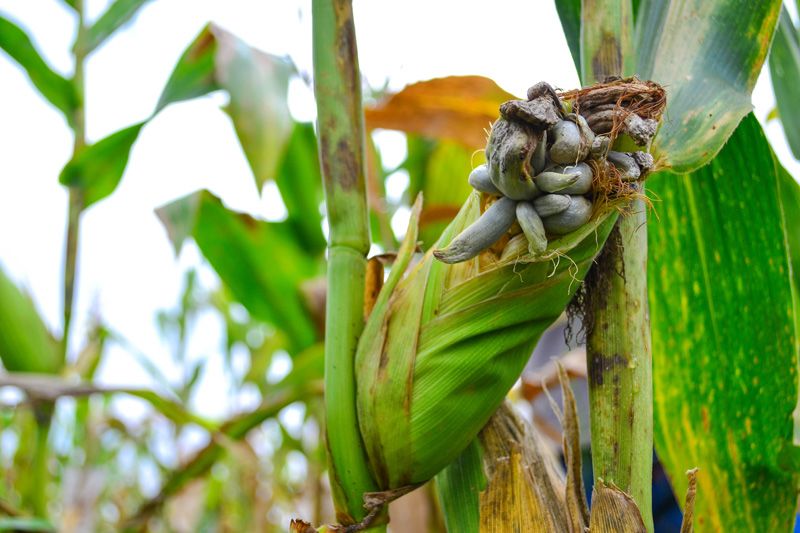
Smut
Smut
Common name
Smut
Causal agent
Smuts are a group of multicellular fungi, usually belonging to the class Ustilaginomycetes. They are included in the phylum Basidiomycota due to similarities in their reproductive life cycles. A few common genera that include smuts are Ustilago, Tilletia, Entyloma, and Urocystis.
Scientific name
Ustilago maydis
Ustilago nuda
Ustilago hordei
Tilletia foetida
Tilletia caries
Entyloma compositarum
Symptoms & Signs
The fungi attack the stems, leaves, and flowers, forming a large, white gall. As the disease progresses, the gall turns dark and becomes a powdery spore mass called sori. Spores of smuts are called teliospores and are characterized by a dark, spherical mass covered with spines or ridges. Besides affecting the quality and yield of crops, the fungi also cause taunted growth of plants with pale, curled-up leaves.
Transmission
The disease spreads through spores, which may be inside the seeds or soil. If the spores are inside the seeds, they enter the plant when the seed is planted. However, external seed-borne spores travel through infected equipment, machinery, wind, or water and cause infection in healthy plants.
Time of concern
Spring and summer
Common hosts
Wheat
Barley
Oats
Maize
Corn
Sugarcane
